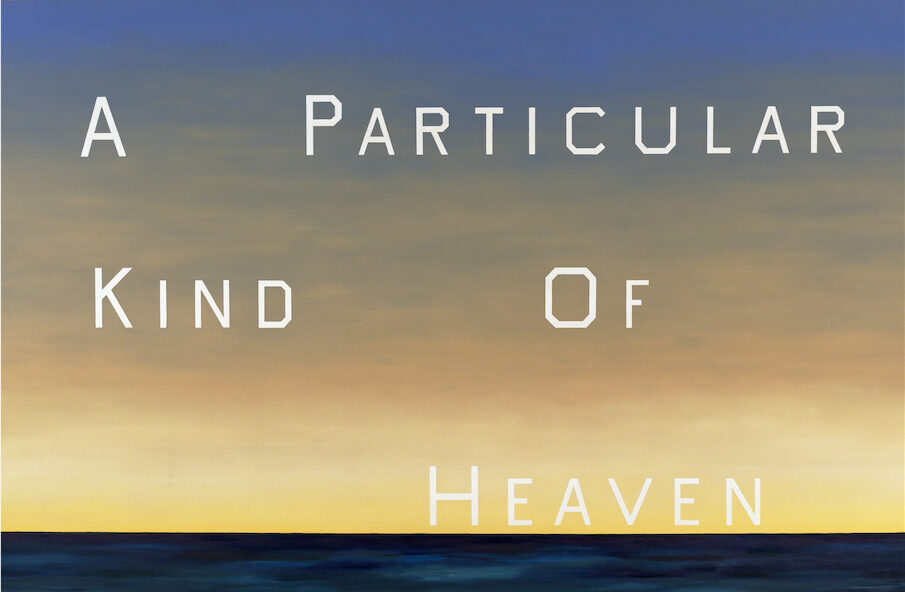
In 1970, for the US Pavilion at the 35th Venice Biennale, Ed Ruscha took an unconventional approach to printmaking by screen printing hundreds of sheets of paper with chocolate paste. He hung them, floor to ceiling, in a single room that has been the only installation work of his long career. The Chocolate Room is on view now in its seventh iteration in the retrospective exhibition ED RUSCHA / NOW THEN at the Museum of Modern Art in New York.

Ed Ruscha spent most of his early life in Oklahoma City before moving to Los Angeles to attend Chouinard Art Institute (now California Institute of the Arts) in 1956. He became well known for printmaking, drawing, and painting, and in 1963 had his first solo exhibition at the influential Ferus Gallery.
“I don’t have any Seine River like Monet. I’ve just got US 66 between Oklahoma and Los Angeles.” – Ed Ruscha

His photographs and book, Every Building on the Sunset Strip, prints like Standard Station, and paintings like A Particular Kind of Heaven, exemplify recurrent subjects of Los Angeles, the American West, and graphics and texts. Ruscha’s work is often categorized as Pop and conceptual, flat and allusive, sometimes banal, and low-key humorous.

For the 1970 Venice Biennale, half of the 47 artists selected for the American pavilion withdrew to demonstrate opposition to the wars in Vietnam and Cambodia. Ed Ruscha stayed on, though, and for his part offered something abstract and playful. He had recently been working with materials including coffee and chocolate syrup, and in Venice gathered hundreds of tubes of Nestlé chocolate paste which he ran through a silk-screen press onto Fabriano paper. He lined a gallery with 360 sheets of chocolate-covered paper, which succumbed to heat, fingerprints, and ants halfway through the summer.

After the Biennale, Chocolate Room remained legendary until it was recreated in 1995 at the Museum of Contemporary Art in Los Angeles. MOCA later acquired the work in 2003, and it has been reinstalled only a handful of times since then for exhibitions at MOCA, the Nevada Museum of Art, Anchorage Museum, Palm Springs Art Museum, and Oklahoma Contemporary. Each of those iterations used Hershey’s bars rather than the original Nestlé, but the room now at MoMA reportedly used Callebaut, the first version in dark chocolate.

On its own today Chocolate Room might casually be called an “immersive experience.” But in the current exhibition, which is the most comprehensive retrospective of Ed Ruscha’s work to date, this outlier installation contains the same cool and clever visual language that is characteristic of his work in other mediums.

Chocolate Room is on view in ED RUSCHA / NOW THEN at MoMA through January 13, 2024, and will be remade again for the exhibition at LACMA from April 7 through October 6, 2024.

“I’m not sure I learned anything from it. It’s just, you know, what it is.”
– Ed Ruscha